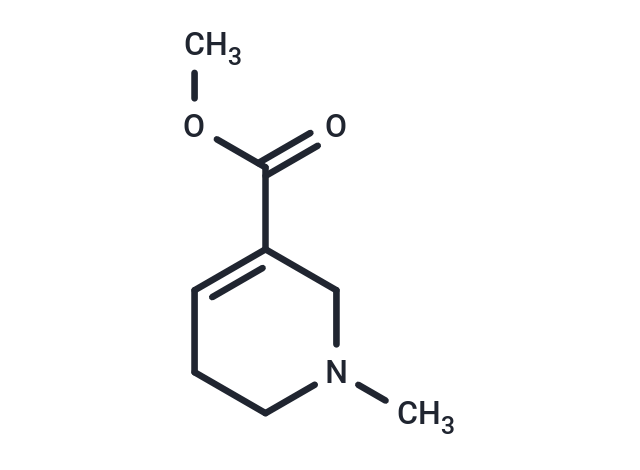Shopping Cart
- Remove All
 Your shopping cart is currently empty
Your shopping cart is currently empty


| Pack Size | Price | Availability | Quantity |
|---|---|---|---|
| 50 mg | $35 | In Stock | |
| 100 mg | $59 | In Stock | |
| 500 mg | $143 | In Stock |
| Description | Arecoline is a natural alkaloid derived from areca nut in the palm family and is a potent nicotine and partial agonist of muscarinic acetylcholine receptors. Arecoline has anti-anxiety and anti-parasitic activity, can induce oxidative stress and can be used to study Alzheimer's disease and Alzheimer's disease. |
| In vitro | Arecoline induces reactive oxygen species generation and cell cycle arrest at the G1/G0 phase in HaCaT cells without affecting p21/Cip1 expression. It also upregulates stress-responsive genes such as hemeoxygenase-1, ferritin light chain, glucose-6-phosphate dehydrogenase, glutamate-cysteine ligase catalytic subunit, and glutathione reductase. At higher concentrations, arecoline causes epithelial cell death due to oxidative trauma without triggering apoptosis[1]. |
| Molecular Weight | 155.19 |
| Formula | C8H13NO2 |
| Cas No. | 63-75-2 |
| Storage | keep away from direct sunlight,keep away from moisture | Shipping with blue ice. | |||||||||||||||||||||||||||||||||||
| Solubility Information | DMSO: 55 mg/mL (354.4 mM) | |||||||||||||||||||||||||||||||||||
Solution Preparation Table | ||||||||||||||||||||||||||||||||||||
DMSO
| ||||||||||||||||||||||||||||||||||||

Copyright © 2015-2024 TargetMol Chemicals Inc. All Rights Reserved.